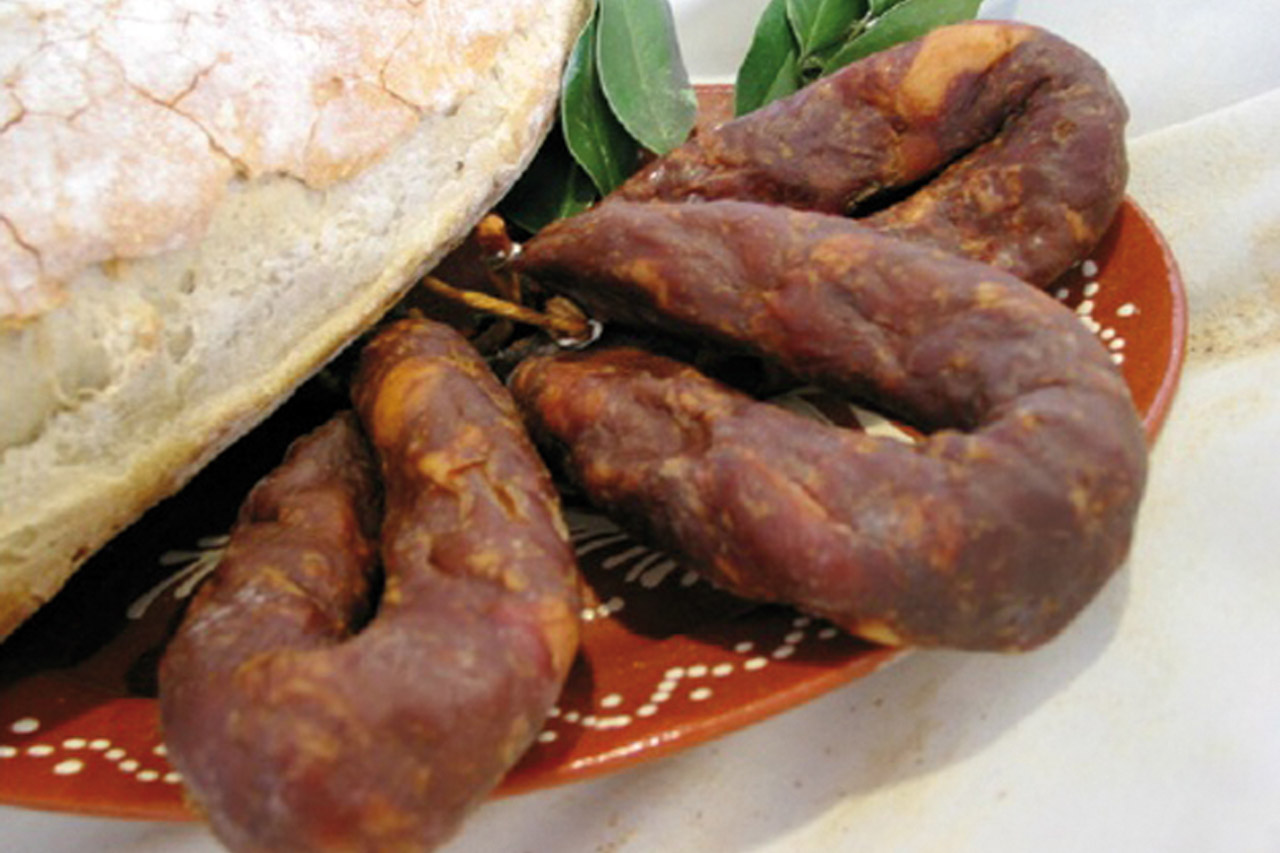Description
The Linguíça do Baixo Alentejo PGI is a smoked sausage made from 70%-80% meat and 20-30% fat of the Alentejana breed of pig. The meat is seasoned with paprika, salt, dried, minced garlic, pepper, crushed cloves and the local white wine.
Production Area
Linguíça do Baixo Alentejo PGI is made in the municipal areas of Aljustrel, Beja, Castro Verde, Ferreira do Alentejo, Mértola, Moura, Serpa and Vidigueira, in the Beja and Faro districts.
Production Method
The pork meat and fat are cut into very small pieces and the water and seasoning are added. Once the ingredients have all been mixed together, the resulting paste is left to marinate for two days and then stuffed into pre-prepared pork intestines which have been conserved in brine. Lastly the sausages are smoked, usually for two or three days over fires made with well dried wood from the oak tree.
Appearance and Flavour
Linguíça do Baixo Alentejo PGI is in the traditional horse shoe shape, about 30 cm long with a maximum diameter of 45 mm. It is a semi-rigid sausage, red and white in colour and has a coarse appearance. It has a pleasing, lightly salted and spicy flavour. It has a smoky aroma.
History
The history of Linguíça do Baixo Alentejo PGI is closely linked to the traditional consumption of pork in the Alentejo region, first noted in the megalithic remains found in this area, dating back to the Bronze Age, and which continued under Celtic domination. Its popularity grew under the Romans who also discovered the benefit of the acorn as the principal ingredient for pig feed. The Arab domination did not affect the consumption of pork even though banned by the Koran. With the first explorations to the east and the opening up of the spice route, the consumption of pork increate yet again with the addition of newly discovered spices.
Gastronomy
Linguíça do Baixo Alentejo PGI must be stored between 5°C and 15°C. Sometimes it is preserved in the local extra virgin olive oil. This sausage is ready to eat. The local farm workers traditionally eat it with bread when out gathering the harvest. It can be enjoyed as a starter or as the main ingredient in traditional local dishes.
Marketing
This sausage is sold as Linguíça do Baixo Alentejo PGI. It is sold whole or sliced and prepacked in vacuum packaging.
Distinctive Features
Linguíça do Baixo Alentejo PGI is one of the many meat based products traditionally made in the Alentejo region, the so-called salsicheria tradicional, because of the long established tradition of pig breeding, the propitious local micro-climate and the traditional skills of sausage making of the local people.







